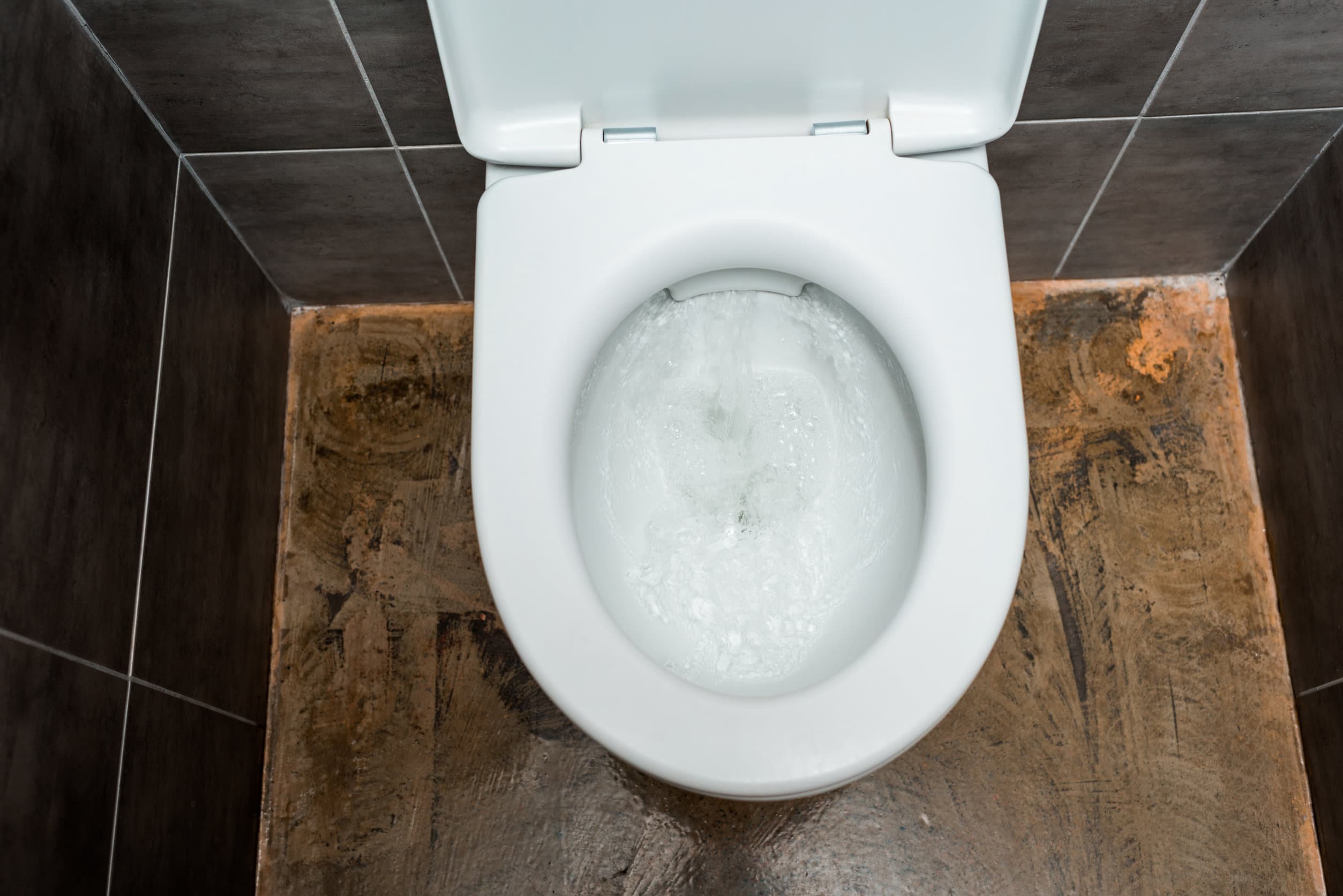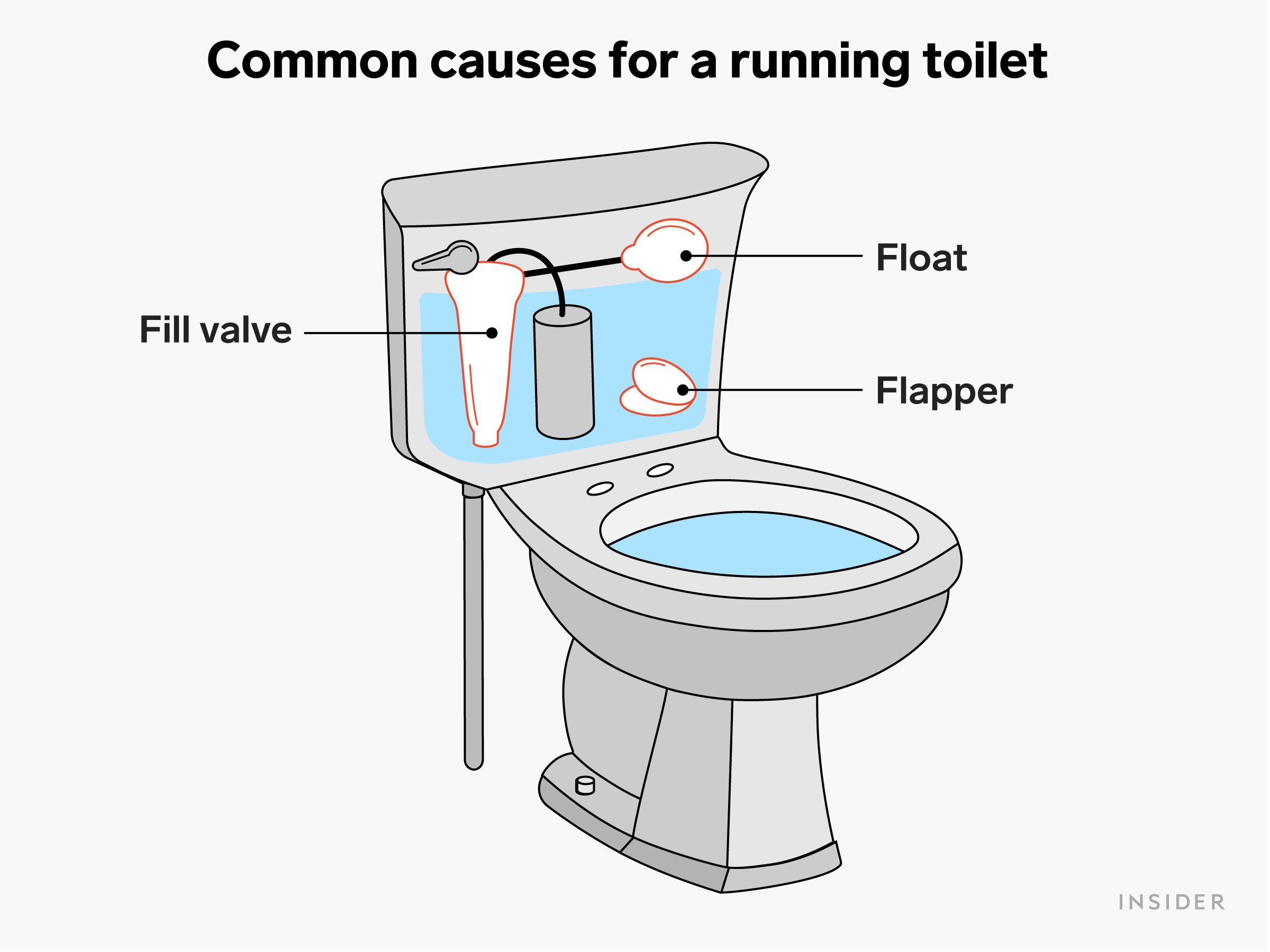Understanding the Problem: Bathroom Toilet Keeps Running

A running toilet is a common household problem that can be both annoying and costly. It signifies a malfunction in the toilet’s internal mechanism, leading to a continuous flow of water into the bowl, even when not in use.
Common Causes of a Running Toilet
Understanding the common causes of a running toilet is crucial for effective troubleshooting and repair. Here are some of the most frequent culprits:
- Faulty Flapper: The flapper is a rubber seal that sits at the bottom of the toilet tank and controls water flow into the bowl. Over time, it can become worn, cracked, or warped, leading to a constant leak. This is often the most common cause of a running toilet.
- Clogged Fill Valve: The fill valve is responsible for regulating water flow into the tank. If it becomes clogged with debris, it may not shut off properly, resulting in a constant trickle of water into the bowl.
- Worn-Out Flush Valve: The flush valve is another critical component that controls water flow. If it becomes worn or damaged, it may not seal tightly, leading to a running toilet.
- Loose or Broken Chain: The chain connects the flush handle to the flapper. If it becomes loose or broken, the flapper may not fully seal, causing a leak.
- Improper Water Level: The water level in the tank should be just below the overflow tube. If it’s too high, it can cause the toilet to run. Conversely, a water level that’s too low can lead to incomplete flushes.
- Cracked or Damaged Tank: In rare cases, a crack or damage in the toilet tank can cause leaks, resulting in a running toilet.
Consequences of a Running Toilet
A running toilet is not just an inconvenience; it can also lead to significant water waste and increased water bills.
- Water Waste: A continuously running toilet can waste hundreds of gallons of water each day. This can contribute to water shortages and environmental damage.
- Higher Water Bills: The excessive water usage from a running toilet will result in higher water bills. The cost can vary depending on your local water rates and the severity of the leak.
Toilet Mechanisms and Failure Points
Toilets typically employ two main mechanisms: the fill valve and the flush valve. Understanding their functions and common failure points is essential for effective troubleshooting.
Fill Valve
The fill valve is responsible for controlling the water flow into the toilet tank. It consists of a float, a valve, and a tube.
- Float: The float rises as the tank fills with water, eventually triggering the valve to shut off the water supply.
- Valve: The valve controls the water flow from the supply line to the tank.
- Tube: The tube connects the float to the valve and allows the float to move freely.
Common failure points in the fill valve include:
- Clogged or stuck float: If the float becomes clogged or stuck, it may not rise properly, leading to overfilling or a running toilet.
- Worn-out or damaged valve: The valve may become worn, cracked, or damaged, preventing it from shutting off completely.
- Loose or broken tube: A loose or broken tube can prevent the float from properly controlling the valve.
Flush Valve
The flush valve controls the water flow from the tank to the bowl during a flush. It typically consists of a flapper, a chain, and a flush handle.
- Flapper: The flapper is a rubber seal that sits at the bottom of the tank and covers the flush valve opening. When the handle is pressed, the flapper lifts, allowing water to flow into the bowl.
- Chain: The chain connects the flush handle to the flapper, lifting the flapper when the handle is pressed.
- Flush Handle: The flush handle is the mechanism used to initiate a flush. It triggers the chain, which lifts the flapper.
Common failure points in the flush valve include:
- Worn-out or damaged flapper: The flapper can become worn, cracked, or warped, preventing it from sealing properly and causing a leak.
- Loose or broken chain: A loose or broken chain may prevent the flapper from fully sealing, leading to a running toilet.
- Worn-out or damaged flush valve: The flush valve itself may become worn or damaged, preventing it from sealing tightly and causing a leak.
Troubleshooting Steps

A running toilet is a common household problem that can be easily fixed with a little bit of DIY effort. The following troubleshooting steps can help you identify and resolve the issue:
Identifying the Source of the Running Water
Before attempting any repairs, it’s crucial to determine the source of the running water. This will help you pinpoint the specific problem area and apply the appropriate solution.
- Listen closely to the toilet tank. If you hear a continuous running sound, the problem is likely with the fill valve or flapper.
- Check the water level in the tank. If the water level is too high, it could be causing the flapper to leak. If the water level is too low, the fill valve may be malfunctioning.
- Inspect the flapper. If the flapper is cracked, torn, or worn out, it will allow water to leak from the tank into the bowl.
- Examine the chain connecting the flapper to the handle. If the chain is too long or too short, it may prevent the flapper from sealing properly.
Adjusting the Flapper
The flapper is a rubber seal that prevents water from flowing from the tank into the bowl. If the flapper is not sealing properly, it can cause the toilet to run.
- Turn off the water supply to the toilet by turning the valve located behind the toilet.
- Flush the toilet to empty the tank.
- Remove the tank lid and inspect the flapper. If the flapper is cracked, torn, or worn out, replace it with a new one.
- If the flapper is in good condition, check to see if it is sealing properly. Gently lift the flapper and release it. If it doesn’t seal tightly against the opening, you may need to adjust the flapper chain.
- Adjust the flapper chain by shortening or lengthening it as needed. The chain should be long enough to allow the flapper to seal tightly, but not so long that it prevents the flapper from opening completely.
- Replace the tank lid and turn the water supply back on.
- Flush the toilet to test if the problem has been resolved.
Cleaning the Fill Valve
The fill valve is responsible for regulating the water level in the toilet tank. If the fill valve is clogged or malfunctioning, it can cause the toilet to run.
- Turn off the water supply to the toilet.
- Flush the toilet to empty the tank.
- Remove the tank lid and locate the fill valve. The fill valve is usually located at the top of the tank and is connected to the water supply line.
- Inspect the fill valve for any signs of mineral buildup or debris. If you find any buildup, you can clean it using a small brush or a toothbrush.
- If the fill valve is severely clogged, you may need to replace it.
- Replace the tank lid and turn the water supply back on.
- Flush the toilet to test if the problem has been resolved.
Checking the Chain
The chain connects the flapper to the handle and allows the flapper to open and close when the toilet is flushed. If the chain is too long or too short, it can prevent the flapper from sealing properly.
- Turn off the water supply to the toilet.
- Flush the toilet to empty the tank.
- Remove the tank lid and inspect the chain. If the chain is too long, shorten it by removing some of the links. If the chain is too short, lengthen it by adding a link or two.
- Replace the tank lid and turn the water supply back on.
- Flush the toilet to test if the problem has been resolved.
Flowchart
[Image of a flowchart illustrating the troubleshooting process. The flowchart should start with the question “Is the toilet running?” and branch out to different troubleshooting steps based on the answer. The flowchart should include steps such as “Check the flapper,” “Clean the fill valve,” and “Check the chain.” The flowchart should end with a decision point asking “Is the problem solved?”]
Professional Assistance

While most toilet running issues can be resolved with basic troubleshooting, there are instances when professional plumbing assistance is essential. This is particularly true when the problem persists despite your efforts or if you suspect a more complex issue.
Bathroom toilet keeps running – Seeking professional help ensures a thorough diagnosis and efficient repair, preventing further damage and potential complications. Additionally, a licensed plumber possesses the necessary expertise, tools, and experience to address various plumbing situations effectively.
When Professional Assistance is Necessary
Engaging a professional plumber is recommended in the following situations:
- The toilet continues to run after implementing basic troubleshooting steps, such as checking the flapper, fill valve, and water supply.
- You notice signs of a leak, such as water pooling around the toilet base or dampness on the floor.
- You suspect a problem with the toilet’s internal mechanisms, such as the tank or bowl, that you are unable to access or repair yourself.
- You experience a sudden and significant increase in water usage, indicating a potential leak or malfunction.
- You are dealing with an older toilet that may require specialized repairs or parts.
Cost of Professional Repairs
The cost of professional toilet repairs can vary significantly depending on factors such as the complexity of the issue, the location, the plumber’s experience, and the parts required.
A simple repair, such as replacing a flapper or fill valve, may cost around $50 to $150, while more complex repairs, like replacing a toilet tank or bowl, can range from $200 to $500 or more.
Finding a Reputable Plumber, Bathroom toilet keeps running
To ensure you receive quality service at a fair price, it is crucial to choose a reputable plumber. Here are some tips for finding a reliable professional:
- Seek recommendations: Ask friends, family, neighbors, or colleagues for referrals to plumbers they have used and trusted.
- Check online reviews: Websites like Yelp, Angie’s List, and HomeAdvisor provide reviews and ratings from previous customers.
- Verify licensing and insurance: Ensure the plumber is licensed and insured to operate in your area. This provides protection in case of any accidents or damages during the repair process.
- Obtain estimates: Get quotes from multiple plumbers before making a decision. Compare prices, services offered, and warranties.
- Ask about guarantees: Inquire about the plumber’s warranty or guarantee on parts and labor. This provides assurance that you are covered in case of any issues arising after the repair.
